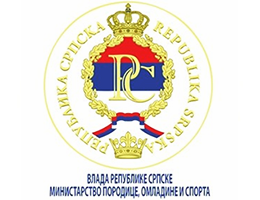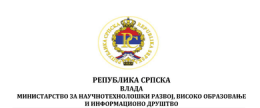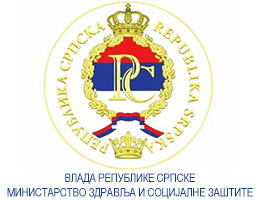Relations Between Motor Abilities and Technical and Tactical Characteristics of Table Tennis Players
Volume 6, Issue 1 (2016)
Volume 6, Issue 1 (2016)
Relations Between Motor Abilities and Technical and Tactical Characteristics of Table Tennis Players
Abstract:
This study was conducted with aim to determine the relations between motor skills and technical and tactical characteristics of table tennis players. The study was conducted on a sample of 48 of the best seniors with aged 18-36 years old (a representative sample) in Bosnia and Herzegovina. For this purpose was applied the system of (12) variables to estimate the basic motor skills, and (8) variables for evaluation of technical and tactical characteristics of table tennis players. In order to determine the relations between the basic motor skills and technical and tactical characteristics of table tennis players, the method applied was the method of canonical correlation analysis. Establishing the link between these two areas resulted in the separation of one canonical factor which was statistically significant. The most significant information for extracted canonical component gives the coefficients of the structure and the cross-structure. The coefficients of the structure represent the correlations of the original variables with canonical component derived from a set of variables to which this variable originally belongs, while coefficients of cross- structure provide correlations of adequate source variables with canonical component that was created in other set of variables. Onto the isolated canonical function the most significant influence have the variables of hand tapping, throwing a medicine 1kg ball by forehand, boom in gray, long jump from the place, while also slightly smaller significance show other variables, but from the same subspaces of basic motor abilities. Based on the coefficients of the structure can be summarized that all the technical and tactical characteristics highly correlate with the factor isolated from this area which is logical, because all manifest variables represent one area (technical skills / playing skill). The variables that are related to the attack phase (initiative in points) and elements of game movement (the safety and effectiveness of the attack over the table, safety and efficacy of the first entrance, efficiency of game movement) are significantly associated with canonical factor isolated in the area of motor abilities. These variables describe technical structures in which “imposes” and maintains the initiative in the point, and are the most aggressive attack techniques, and generally seek the largest motor engagement. No surprises then that exactly these variables of technical and tactical structures are significantly associated with the factor isolated in the area of motor abilities are the most important.
Keywords:
table tennis players, motor abilities, technical and tactical characteristics, canonical correlation analysis
Full Text:
References:
- Ahmetović, Z. (1987). Testovi za utvrđivanje nivoa biomotoričkih sposobnosti sportista. Novi Sad: Zavod za fizičku kulturu, Vojvodina. [In Serbian]
- Chiu, Y.-H., & Tu, J.-H., (2006). The measuring method for the spin axis and the rate of the rotational ball. Journal of Physical Education in Higher Education, 8(3), 139-147.
- Đokić, Z. (2001). Structure of competitors activities of top table tennis players. Table tennis Sciences, 4-5, 74-91.
- Đokić, Z. (2007). Functional diagnostics of top table tennis players. U M. Kondrič, & G. Furjan Mandić (Eds.), Proceedings book of The 10th Anniversary ITTF Sports Science Congress (str. 168 - 174). Zagreb: University of Zagreb, Faculty of kinesiology; Croatian Table Tennis Association; International Table Tennis Federation.
- Fei, Y., Ushiyama, Y., Jie, L., H., Lizuka, S., & Komijama, K. (2010). Analysis of the ball fall point in table tennis game. International Journal of Table Tennis Sciences, 6, 131-136.
- Hsu, Y.W.E., Tsai, C.L.A., Lu, J. H. F., & Tsai, F.C.N. (2010). The effectiveness of table tennis training on motor performance and visual perceptual ability in children with DCD. Journal of Sport and Exercise Psychology, 32, 86-87.
- Ivanek, V., Mikić, B., & Avdibašić-Vukadinović, N. (2010). Kanonička povezanost motoričkih i situaciono-motoričkih sposobnosti stolnotenisera kadetskog uzrasta. U D. Tomić, & M. Đukić, (Eds.), Zbornik radova VI Međunarodne konferencije „Menadžment u sportu“, (str.57-61). Beograd. Fakultet za menadžment u sportu “Alfa Univerzitet”. [In Croatian]
- Kondrič, M., Hudetz, R., Koščak, J., Slatinšek, U., & Cerar, K. (2007). Research regarding possibilities of marking the ball in order to make spin visible. U M. Kondrič, & G. Furjan Mandić (Eds.), Proceedings book of The 10th Anniversary ITTF Sports Science Congress (str. 120 - 122). Zagreb: University of Zagreb, Faculty of kinesiology; Croatian Table Tennis Association; International Table Tennis Federation.
- Kondrič, M., Zagatto, A. M., & Sekulić, D. (2013). The Physiological Demands of Table Tennis: A Review. Journal of Sports Science and Medicine, 12(3), 362-370.
- Mikić, B. (2000). Testiranje i mjerenje u sportu. Tuzla: Fakultet za tjelesni odgoj i sport Univerziteta u Tuzli. [In Bosnian]
- Munivrana, G. (2011). Strukturna analiza tehničko-taktičkih elemenata stolnoteniske igre. Doktorska disertacija. Zagreb: Sveučilište u Zagrebu, Kineziološki fakultet. [In Croatian]
- Raab, M. (2004). Motor selection and execution training in table tennis. International Journal of Psychology, 39(5-6), 128-128.
- Sekulić, D., & Metikoš, D. (2007). Osnove transformacijskih postupaka u kineziologiji. Udžbenici Sveučilišta u Splitu. [In Croatian]






